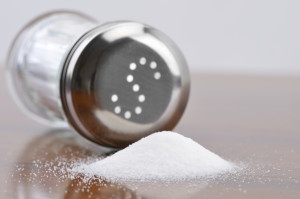AARP Hearing Center
A Little More Salt Is Not So Bad for Us
By Candy Sagon, January 21, 2015 12:00 PM

A little more salt may not be such a bad thing for healthy older adults, a new study finds.
Adults age 50-plus have been warned for years not to consume more than 1,500 milligrams (mg) of sodium daily — less than a teaspoon of salt — or they risk all kinds of bad heart-health effects, from high blood pressure to heart failure.
But researchers found that pushing the limit a bit, to 2,300 mg, or about a teaspoon of salt, didn't increase deaths, heart disease, stroke or heart failure — at least in adults ages 71 to 80.
Make resolutions with staying power! Sign up for our free programs to make 2015 your ReNew Year!
In fact, among the 2,600 adults followed for 10 years, the death rate was lowest for those who consumed 1,500 to 2,300 mg of sodium a day. The death rate was slightly higher for both those who consumed 1,500 mg or less, and those who consumed more than 2,300 mg a day.
This doesn’t mean we should now eat whatever high-sodium foods we want, warned researchers. The study looked at only a narrow range of modest salt intake. The point was to determine whether the current guideline for sodium consumption — 1,500 mg — was unnecessarily low for older adults without heart disease. There has been very little data on whether this level is really appropriate for that age range, said lead researcher Andreas Kalogeropoulos, M.D., assistant professor of cardiology at Emory University in Atlanta, in an interview with MedicalResearch.com.
Based on the study’s results, there appears to be no link between slightly more salt in the diet and an increased number of deaths, said Kalogeropoulus. One limitation to the study, however, is that participants self-reported the sodium they consumed — meaning their estimates could be off.
Currently, the average American consumes about 3,400 mg of sodium, about twice what the American Heart Association and the Centers for Disease Control and Prevention recommend. Most of that sodium is not coming from the saltshaker on the table but from processed and restaurant food, Elliott Antman, M.D., president of the American Heart Association, told HealthDay.
>> Get discounts on health services with your AARP Member Advantages.
The easiest way consumers can cut back on sodium, he said, is to “read nutrition labels when they shop and ask restaurants to provide the nutrition contents of their meals. They should choose lower-salt products in the supermarket and select lower-salt options on the menu.”
The study was published online on Jan. 19 in JAMA Internal Medicine.
Photo: LeventKonuk/iStock

Also of Interest:
- Are Older Adults Being Overtreated for Diabetes?
- Which States Tax Social Security Benefits?
- Get Involved: Learn How You Can Give Back
- Join AARP: savings, resources and news for your well-being
See the AARP home page for deals, savings tips, trivia and more.































































